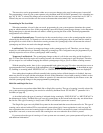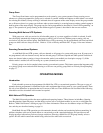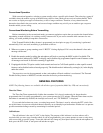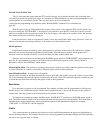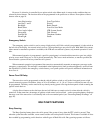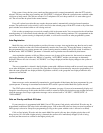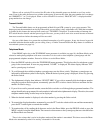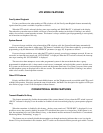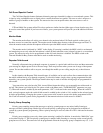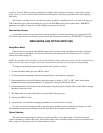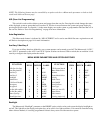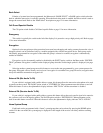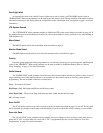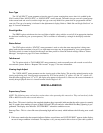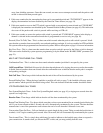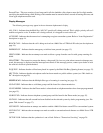Call Guard Squelch Control
The Call Guard Squelch feature eliminates distracting messages intended for others on conventional systems. This
is done by using a subaudible tone or digital code to control the transceiver squelch. This tone or code is unique to a
mobile or group of mobiles on that system. The transceiver does not unsquelch unless the correct tone or code is
detected.
LTR and Multi-Net systems utilize ID codes to perform a similar function. Other types of tone decoders may also
be used to control the squelch. If you have one of these, your system operator will provide you with additional informa-
tion.
Monitor Mode
The monitor mode allows all activity on a channel to be monitored when Call Guard squelch or other types of
decoders are used to control the squelch. The monitor mode disables these features so that all messages are heard. To
select the monitor mode, take the microphone off-hook or press the MON switch if available.
The monitor mode is indicated by “MON” in the display. If scanning is enabled, the MON switch is not detected
and monitoring occurs only when the microphone is taken off-hook when the revert (selected) system is a conventional
system. The transceiver may also be programmed so that off- hook detection is disabled. The MON switch or the
Transmit Disable On Busy feature must then be used to enable monitoring.
Repeater Talk-Around
Normally, all transmissions go through a repeater. A repeater is a special radio which receives and then retransmits
your message at a higher power level to increase range. There may be times when you are out of range of the repeater
system. You are then unable to talk to anyone, even though the mobile you are calling may be only a short distance
away.
In this situation, the Repeater Talk-Around feature, if available, can be used to allow direct communication with
the mobile without having to go through a repeater. To select this feature, simply select a group programmed for talk-
around by your system operator. The unique identification may be used to indicate which groups are programmed for
talk-around.
Your transceiver may also have the Talk- Around Select feature that allows you to manually turn talk-around on
and off. This feature is provided by the TA option switch or the Menu mode “TALKAROUND” parameter (see page
17). When talk-around is enabled by the menu parameter, “ON” is indicated in the status display. When the switch is
used, a triangle appears under the switch if talk-around is enabled by the switch or if it is enabled on the selected group
by dealer programming. Changing the system or group causes talk- around to revert to the dealer programmed condi-
tion. Each conventional system can be programmed so that manual selection of talk-around is disabled.
Priority Group Sampling
Priority group sampling ensures that messages on priority system/groups are not missed while listening to
messages on other system/groups. Both a first and second priority system/group can be designated in each bank of
systems by system operator programming. When a priority message is received, either P1 or P2 is indicated in the status
display.
Priority group sampling occurs only when system scanning is enabled. In addition, it must be the “Multi-Site” type
as described on page 11. The first priority system/group is sampled while listening to a message on the second priority
group but not vice versa. The transceiver can be programmed so that the first priority group is sampled every 0.5, 1, or 2



